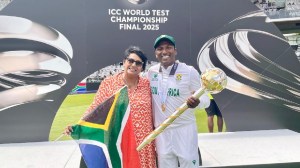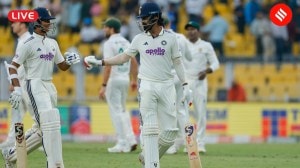In the GROOVE
Television proves that India can dance
Television proves that India can dance
For television viewers,the names Dharmesh-sir and Shakti Anand are just as familiar as that of Mithun Chakraborthy. Every Friday and Saturday,viewers have been tuning into Dance India Dance on Zee TV to follow the fortunes of these talented dancers and many others from around the country and possibly,nurse their own ambitions of burning up the dance floors. Its the same story with other such shows like Nach Baliye,Zara Nachke Dikha and Jhalak Dikhhla Jaa.
Dance shows have always managed to draw eyeballs and are increasingly creating minor celebrities out of the contestants, says choreographer-turned-filmmaker Ahmed Khan,the judge of Colors new show Chak Dhoom Dhoom. Even a show that didnt focus exclusively on dance,Indias Got Talent on Colors,saw a dance troupe from Orissa,Prince Dance Group,first enthralling viewers and the judges,and subsequently winning the competition. While some of the highly-publicised shows to be launched soon include Zara Nachke Dikha on Star Plus,Dance India Dance Lil Masters on Zee TV and Chak Dhoom Dhoom on Colors,dance shows are not new to Indian television. One of the most successful talent shows was Sonys Boogie Woogie. It ran for 11 years and was launched at a time when televised talent shows were mostly limited to music and singing and most viewers still preferred to watch sitcoms and soaps.
Even Zee TV,which ran the highly-successful SaReGaMa (later called SaReGaMaPa),took some time before it launched a nationwide hunt for dance talent with Dance India Dance. Akash Chawla,marketing head of Zee TV explains,Zees regional channels initiated dance talent hunt shows a little ahead of Zee TV. The phenomenal success of these shows prompted us to launch them on a larger canvas across the country for the main channel. Zee TV launched Dance India Dance at a point when we were convinced that the audience was ready for it.
So what was it that made the audience lap up dance shows? Sandip Soparrkar,wholl be judging Lil Masters,says that its quite simple. It was a trend that was just waiting to be picked up. Indians are natural dancers; we may be bathrooms singers,but when it comes to dancing,were willing to do it in public. Apart from that natural affinity to dancing,the dancer/choreographer says,it also dawned on viewers that its something that takes only a little dedication and discipline to learn.
As Khan explains,When a viewer watches a person from Indore or Allahabad dancing and getting nationwide acclaim,it ignites a spark of ambition in them too. We cant all sing singing requires a certain inborn talent that cannot be acquired with practice. But we can all dance. Its this aspirational element that makes dance shows so successful.
Another possible attraction of dance shows is that they effectively combine glamour and entertainment without the guilt-inducing factor of voyeuristic reality shows like Bigg Boss and Iss Jungle Se Mujhe Bachao. The high-wattage celebrity quotient certainly sets dance shows apart from the restShilpa Shetty,who had previously been a judge on Jhalak Dikhhla Jaa,is now taking on that role for Zara Nachke Dikha,where she will be joined by Arshad Warsi. Rani Mukerji had been the queen bee on Sonys Dance Premiere League,while choreographer-cum-director Farah Khan has judged Jhalak Dikhhla Jaa and Nach Baliye. Viewer Sudha Pisharoti says,While it is certainly entertaining to watch a show where celebrities spill their dirty secrets,one can end up feeling guilty for giving in to ones inner Peeping Tom. But a dance show is pure,guilt-free entertainment. Certain aspects of dance shows have come in for criticism,though. What a lot of people find particularly distasteful is the way children are encouraged to dance like adults. Soparrkar says,Sometimes Im appalled by how children transform into adults while dancingright from the hip-thrusts to the facial expressions. They should be encouraged to enjoy their childhood.







- 01
- 02
- 03
- 04
- 05
























